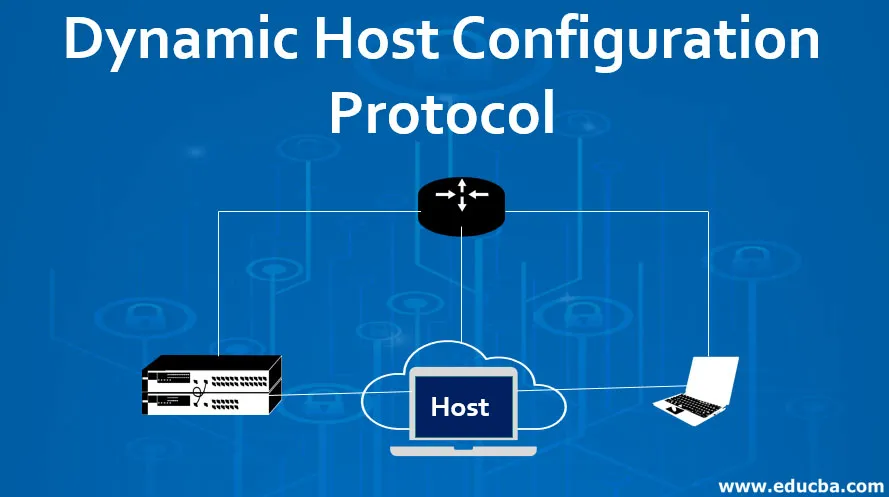
DYNAMIC HOST CONFIGURATION PROTOCOL — DHCP
Greetings everyone! Are you ready for a thrilling journey into the world of networking and the magic of DHCP?DHCP, or Dynamic Host Configuration Protocol, is like a superhero for your network! It takes care of automatically assigning IP addresses to all the devices connected to the network, just like how a superhero saves the day by solving all the problems. No more manual configuration, no more mistakes, and no more headaches!
What Is Dynamic Host Configuration Protocol (DHCP)
Configuring IP addressing on a large TCP/IP-based network can be a nightmare, especially if machines are moved from one network to another frequently. DHCP can help with the workload of configuring systems on a network by assigning addresses to systems on boot-up automatically. The process of dynamically assigning IP addresses is managed via a DHCP server.DHCP (Dynamic Host Configuration Protocol) is a network protocol that automatically assigns IP addresses to devices on a network. This makes it easier for network administrators to manage the network and for users to connect their devices to the network.Imagine you have a neighborhood with many houses. Each house has its own address, so the mailman knows where to deliver the mail. Similarly, each device on a network needs its own IP address so other devices on the network can communicate with it.Instead of manually assigning IP addresses to each device, the DHCP server automatically assigns an IP address to each device when it connects to the network. The DHCP server also assigns other information such as the subnet mask, default gateway, and DNS server information.In this way, DHCP makes it easy for network administrators to manage IP addresses and for users to connect their devices to the network.
How DHCP Works

When a PC comes online and is set up to use a DHCP server
- The device sends a broadcast (discovery) message requesting an IP address.
- The DHCP server responds with an offer containing an IP address that the client can lease (known as the DHCP Offer).
- The client then accepts the offer by sending a request message for that address from the DHCP server (known as the DHCP Request).
- The server responds with an acknowledgment to the client that it has that address and additional settings for the lease time (known as the DHCP ACK).
Why the Need for DHCP
Ease of management: Manually configuring IP addresses for each device on a network can be time-consuming and error-prone. DHCP eliminates the need for manual IP address configuration, making it easier for network administrators to manage IP addresses.
Dynamic assignment: DHCP allows for dynamic IP address assignment, which means that IP addresses are automatically assigned and reassigned as devices connect and disconnect from the network. This helps prevent IP address conflicts and makes it easier for network administrators to manage IP addresses.
Scalability: As networks grow and more devices are added, manually configuring IP addresses becomes increasingly difficult. DHCP makes it easier to scale a network by automatically assigning IP addresses to new devices as they are added.
Reduced downtime: DHCP can reduce downtime by automatically assigning new IP addresses to devices if the existing IP addresses become unavailable. This helps ensure that devices can continue to communicate on the network even if IP addresses change.
Option configuration: DHCP allows network administrators to configure additional options, such as the subnet mask, default gateway, and DNS server information. This helps configure devices for the network and makes it easier for network administrators to manage the network.
Features of Dynamic Host Configuration Protocol (DHCP)
DHCP provides several benefits and features that make it a commonly used protocol on many networks:
Dynamic IP assignment: DHCP automatically assigns an IP address to a device when it connects to the network, and it can also automatically reassign a new IP address if the device is disconnected and reconnects to the network. This eliminates the need for manual configuration of IP addresses and makes it easier for network administrators to manage IP addresses.
Pool of IP addresses: DHCP servers manage a pool of available IP addresses, so the DHCP server can assign a unique IP address to each device that connects to the network. This helps prevent IP address conflicts, where two devices on the same network have the same IP address.
- Centralized management: DHCP provides a centralized way to manage IP addresses and other network information, making it easier for network administrators to manage and troubleshoot the network.
- IP lease time: DHCP assigns an IP address to a device for a certain amount of time, called the IP lease time. When the lease time expires, the device must request a new IP address from the DHCP server. This helps prevent IP address conflicts and allows the DHCP server to dynamically manage IP addresses.
- Option configuration: DHCP allows network administrators to configure additional options, such as the subnet mask, default gateway, and DNS server information. This information is included in the DHCP response and helps configure the device for the network.
In conclusion, DHCP is a powerful and useful protocol that provides automatic IP address assignment, centralized management, and additional network configuration options. This makes it easier for network administrators to manage IP addresses and for users to connect their devices to the network.


